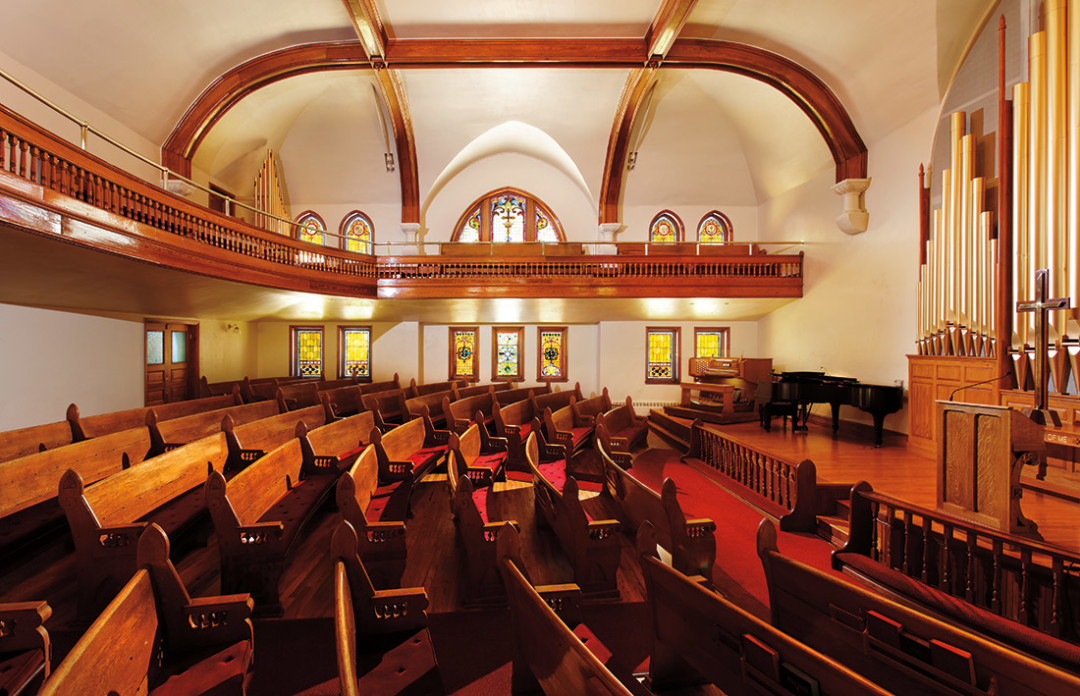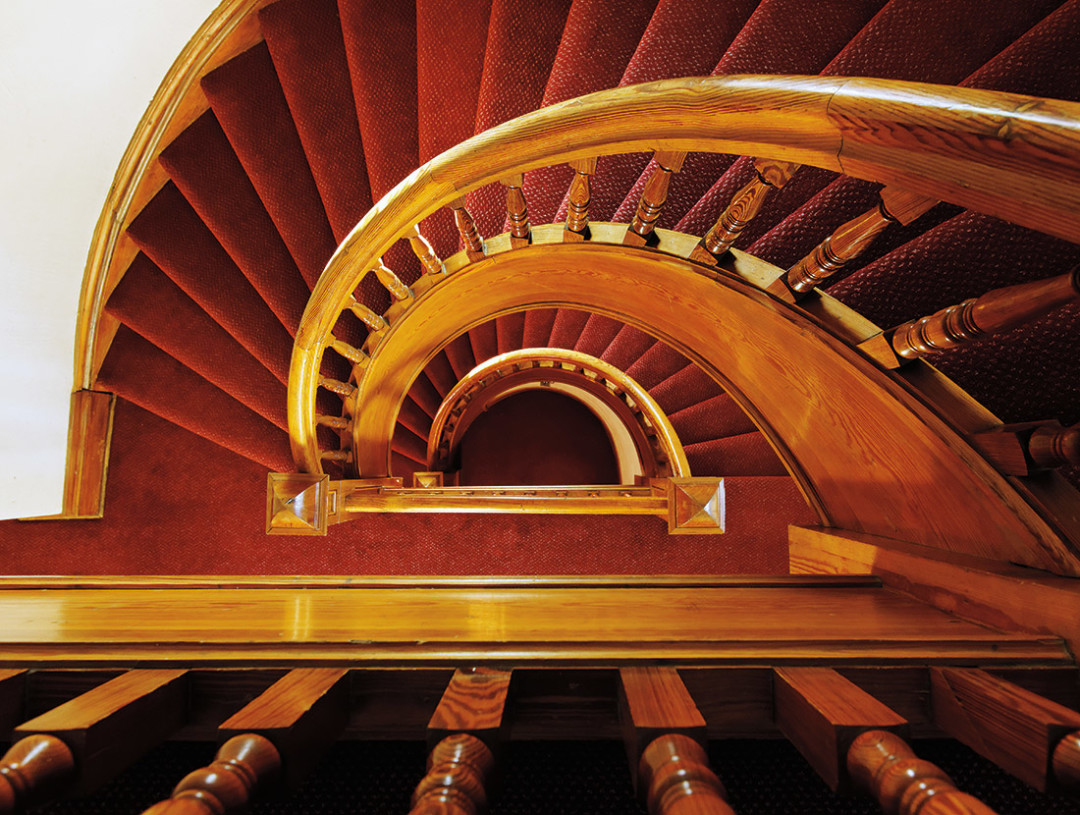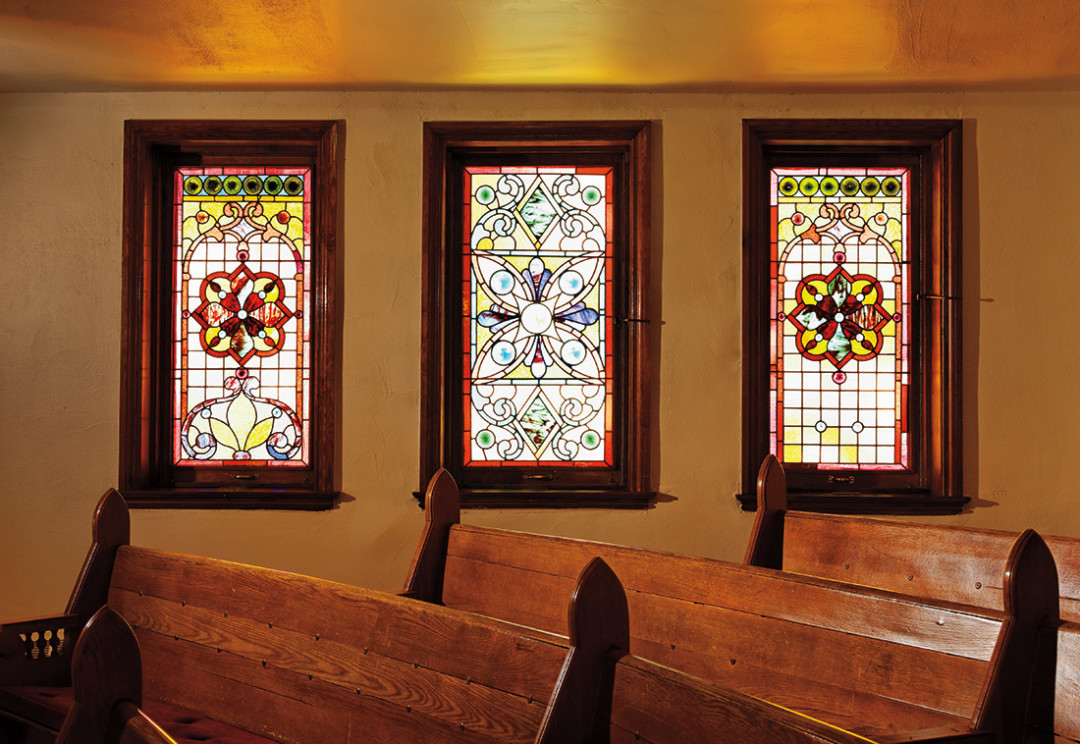Community Cornerstone

Image: Ross Kribbs
Albert Schweitzer played its organ. Serenity Prayer author Reinhold Niebuhr preached from its pulpit. John Denver recorded his Merry Christmas Aspen holiday album amid its impeccable acoustics.
No doubt about it: from its inception as a Presbyterian church in 1890 to its current incarnation as the Aspen Community Church, the stone building on the corner of Bleeker and Aspen Streets has been much more than a house of worship.
Today, the church still holds Sunday services, now Methodist, in the sanctuary, but it also functions as a center for yoga classes and music recitals, for nonprofit and AA meetings, and for commitment ceremonies and weddings of any religious faith. The words published in the Aspen Daily Chronicle a week following the church’s March 1891 dedication still ring true: “Inside its walls were lost all distinctions of high and low, rich and poor.”

One hundred and twenty years later, those sandstone walls were crumbling.
In 2010, to assess restoration needs, the church’s board of trustees contacted William H. Baker Construction, whose project manager, Steve DeClute, promptly requested an analysis of the building’s structural components. After viewing the results, DeClute worried that the church could not withstand another Aspen winter, and the building was shut down.

Image: Ross Kribbs
When he began renovations, DeClute says the overall structure—interior and exterior—was essentially unchanged from 1890. At the end of 2010, he and his crew spent a couple of months installing a stopgap collar-tie stabilization of the whole structure, the first of a three-phase restoration process. The second phase began shortly thereafter and lasted nearly three years.
The most urgent task was water mitigation. The construction team worked with a number of subcontractors to weatherproof the church in the most historically accurate way possible. They added new lead-coated copper gutters and downspouts; built a new roof under-neath the old one, reshingling the original with cedar shakes hand-dipped in a mix of linseed oil, mineral spirits, and powdered graphite; and rebedded and repointed the mortar with historically correct ingredients to ensure proper weight balance between the stone and the mortar.
All the while, the workers marveled at the work done by their counterparts in 1890: a church built by hand in about ten months that required moving between 1,500 and 1,800 tons of rough rock from the Peachblow Quarry, near Ruedi, via horse-drawn carts and the Colorado Midland Railroad.

Image: Ross Kribbs
The original cost was $20,000. The estimate for the total restoration is $4.95 million, a sum that will be paid with funds raised by the Generation to Generation capital stewardship campaign, overseen by Liz Means of Means Consulting Services. $1.95 million has been contributed to date. Phase III will include mechanical upgrades, stained glass repairs, and balcony reinforcement.
Though that work remains vital, the church has reopened. The Aspen community once again gathers under its venerable gables, now with the exterior waterproofed, the scaffolding down, and the attic vacated.
That’s right, vacated.
“Yes,” says Means, “there were bats in the belfry.”













































